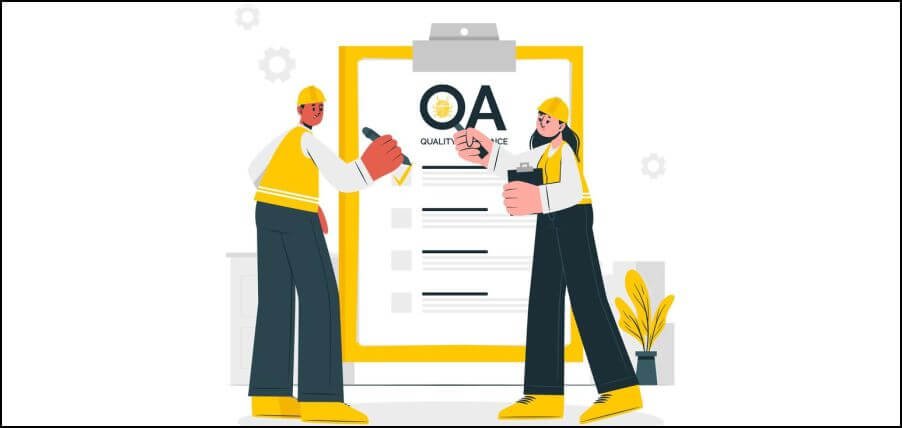Life will throw some of the most unpredictable curveballs our way, one of which is a natural disaster. But in a tragic situation like this, your home insurance coverage will be more than just a piece of paper. It will serve as your safety net, the financial lifeline that will enable you to recover and rebuild. But do you know what your policy actually covers, or are you overlooking important coverages that might expose you? Let’s dive into the nitty-gritty of homeowners insurance and disaster readiness to uncover the real worth that good protection really delivers when you need it most.
Understanding Home Insurance Policies
Before delving into the specifics of home insurance during a disaster, it’s crucial to grasp the fundamental workings of home insurance policies. There’s the home insurance. It will be there, readily available as an umbrella for whenever an unexpected circumstance may hit the house.
This home insurance ensures everything will be alright in case of a fire or break-in, and other natural disasters that require replacement or repair.
It is not that simple as it would look. The specifics of your coverage define your coverage. You’ve got two main types to take into account: ‘open perils’ and ‘named perils’. An ‘open perils’ policy covers all disasters, barring those explicitly excluded. A “named perils” policy, however, only covers the catastrophes that are expressly mentioned in your policy.
Whether you select “actual cash value” or “replacement cost” also affects the amount of coverage. While the former settles the amount one’s property could be sold off for, depreciable loss taken into consideration, the latter reimburses according to the costs of replacing what you have owned at today’s prices, all depreciation notwithstanding.
Knowing these subtleties is important to finding out if you have enough coverage in case of any disaster.
Common Misconceptions About Home Insurance
Home insurance can be so obscure that there has been a myth or two passed around that simply find their way into the popular psyche, generating confusion and potentially costly errors in its wake.
You could be wrong in thinking that market value is what is covered by your policy for your house, for example. It really typically covers the cost of rebuild, not market value.
Another common myth is that all personal property is covered. Your policy does indeed include personal property coverage, although this is typically limited in scope. More valuable items, such as jewelry or art, may need to be separately covered.
You might think that home insurance covers everything. However, the standard policies have some exceptions. For instance, floods or earthquakes are not covered. Such extra coverage usually exists in separate policies. Therefore, it’s crucial to understand the specifics of your policy, know what’s covered, and consider purchasing Home Insurance In Dubai & The UAE as needed.
Lastly, individuals believe that the homeowners’ insurance covers any kind of injury occurring on their premises. Liability coverage may assist with injury at your home, but it is not all-inclusive. For example, it cannot pay for your health care and that of any other of your relatives.
By knowing these lies, you will save your financial security and do not do anything wrongly.
The Role of Home Insurance in Disasters
Understanding the role of your home insurance during disasters is crucial, as it serves as a financial safety net, helping you recover from unexpected calamitous events. While physical damage is definitely not the only concern, the psychological trauma and financial burden that come as a result are areas that your home insurance addresses.
The damage caused due to this disaster will be covered by your insurance company, thereby recovering your loss. To apply for your claim, you have to inform the damage to your insurance company.
You must provide all the information regarding the damage, from pictures to lists of damaged items. Therefore, in case you step-by-step process the procedure in detail, then you will surely be compensated properly for your loss.
You would want to remember that home insurance is not always available for natural disasters. Knowing specifics about your insurance, knowing what is and isn’t covered, and even investing in additional coverage if necessary all come into play because some types of catastrophic occurrence, such as earthquakes or floods, may not be covered.
Coverages Included in a Typical Policy
Navigating through the complexities of your home insurance policy requires an understanding of the typical coverages that are usually included.
Your policy will primarily cover your home’s structure. In case a natural disaster occurs, this will help you rebuild or repair the physical aspects of your property. This usually covers the main house, attached structures like a garage, and some detached structures.
Then, your contents-whether inside or out in the yard-are also generally covered.
This will pay for replacement or repair if your goods are stolen, broken, or burned. This would include clothing, electronics, furniture, and even valuable items like jewelry and artwork.
The third is liability coverage. This will be responsible in case any outside member of your household gets injured on your property or you somehow cause damage to another person’s property by accident.
Lastly, most insurance also covers additional living expenses. Your insurance will pay for living somewhere else while your home is restored or rebuilt in the event that a disaster renders it uninhabitable.
You may be better prepared in case of disaster by knowing these important coverages.
Extra Coverage Options for High-Risk Homes
While exploring other coverages provided can give homeowners based in high-risk areas a second layer of disaster protection, the options also known as endorsements or riders enhance your basic coverage by covering particular risks which are not usually covered by these products, for example, earthquakes, hurricanes or floods.
You might even want to think about flood insurance, which is a different kind of policy altogether that pays out for damage due to flooding. Flooding is not part of regular home insurance, though most people assume it is. This is an add-on you’ll need if you live in a place that tends to flood.
Other essential supplementary protection of people dwelling near fault lines is earthquake insurance. In the same manner, houses in hurricane-prone areas should also have hurricane insurance. These kinds of insurance will fill the current gaps of typical insurance since these insurance cover specific threats posed by such disasters.
These may be higher-rate policies, of course. Those extra coverages come with the price and also with the associated risks. Determining the pros and cons may take some deliberate thought to both keep your budget in check while also keeping at peace.
Consulting with an insurance advisor can help you make an informed decision about what extra coverage is best for your high-risk home.
How Insurance Helps After Natural Disasters
You may also wish to include flood insurance. That is another form of insurance coverage that comes as a separate policy for flooding damages. Flooded damage does not fall within your standard home insurance, but people often mistakenly think it does. This is something you would have to add on if you are in an area that easily floods.
Other important supplementary protection of people staying near fault lines is earthquake insurance. In the same way, houses in hurricane-prone areas should also be covered with hurricane insurance. Such types of insurance will fill up the present loopholes of conventional insurance since such insurance cover certain threats posed by such disasters.
Of course, these could be high rate policies. All those additional coverage come at a price, but also bring associated risks with them. Balancing the pros and cons would likely require some conscious thought both to keep your budget in line, but also at peace.
You may also be interested in adding flood insurance, an additional type of coverage specific to losses from floods. Flooding is not part of standard homeowner’s insurance, however-many people assume it is. This is an add-on you will need to cover your home if you are living in an area known to flood.
Other crucial supplementary security of people dwelling near fault lines is earthquake insurance. Just as that, homes in areas threatened by hurricane attacks should be protected with hurricane insurance. This particular insurance will provide existing gaps in a normal kind of insurance given that these safeguard specific threats incurred by such acts.
These might be higher-rate policies, after all. Those extra coverages are paid for in more ways than one, and with risk. Determining the pros and cons might take some deliberate thought both to keep your budget in check while also keeping at peace.
Although getting the right coverage for your house is a preventive measure, let’s see how insurance can be your financial lifeline in case of a natural disaster. When your home is damaged by unexpected disasters like hurricanes, floods, or wildfires, your insurance coverage acts as a safety net to help you rebuild or repair it.
Depending on the details of your insurance, you may be protected for both your personal belongings and the actual structure of your house. Imagine your town being hit by a storm that leaves a path of devastation in its wake. Depending on the value and conditions of your policy, your insurance may pay for the replacement of your broken electronics, clothes, furniture, and other personal belongings.
You may even wish to add flood insurance, which is a separate policy which covers damage due to flooding. Flooding damage is not an insurance coverage under normal home insurance, though many people think it is. This is an add-on you will need if you live in an area that floods easily.
Other necessary additional protection of individuals living close to fault lines is earthquake insurance. In the same way, houses along hurricane-prone regions should also be given hurricane insurance. These types of insurance will fill the present gaps of conventional insurance since these types of insurance cover specific threats posed by such disasters.
Those higher-rate policies. Of course, those extra covers come with their price and risks associated with the same. But the pros and cons would certainly take some thinking to keep it in check along with keeping oneself at peace.
The Claims Process Explained
You can even add flood insurance. That’s a completely different type of policy that insures against flooding damage. Flooding damage isn’t typically included in regular home insurance; most people are shocked by this. It’s an add-on you’ll want if you live in an area that tends to flood.
Earthquake insurance is another vital supplementary protection of those dwelling nearby fault lines. Houses, in similar ways, should obtain hurricane insurance depending on the degree of regions that experience hurricanes. Such kinds of insurance will bridge the existing gap left by standard insurance since those particular insurance caters to given specific threats in these disasters.
These would, of course be the higher-rate policies. These extra coverages come with a price tag and associated risks. One is obligated to think through the pros and cons to keep both one’s budget in line and also at peace. This will allow you to estimate how much your loss is worth. In case the disaster forces you to temporarily relocate from your house, it is also essential to document increased living costs.
Wait a minute. When an insurance company is dealing with multiple claims resulting from a major disaster, the settlement process on the claims usually takes much time.
Clarify any issues and raise any questions at the process stage. Being proactive and informed will enhance your experience and outcomes significantly with a claims process.
Rebuilding and Replacement Coverage
After you have passed through the process of the claims, you should also know about rebuilding and replacement coverage. These are actually designed to rebuild or replace your house as well as other personal belongings after having a disaster and are an important part of your home insurance.
This is the amount your insurer will pay to rebuild your house in case of a total loss. Note that this is based on the cost of labor, materials, and building in your location and may not necessarily correspond to the market value of your house.
This replacement coverage covers the personal belongings of your house. That is to say, it covers your clothes, electronics, appliances, furniture, and many more.
There are two varieties of replacement insurance. These two include “Actual Cash Value,” where the settlement received is a value that incorporates any depreciation by your property in respect to losses suffered. And the other would be “Replacement Cost,” completely disregarding deprecation, covering at current marketplace rates the loss’s cost as per replacing merchandise.
Make sure you understand all these coverages so you have enough protection. Take some time reviewing your coverage and do not be afraid to ask your insurer.
How Insurance Provides Temporary Living Expenses
After a disaster, your home insurance policy may step in to pay for additional living expenses in order to reduce the pain of being removed from your home. Loss of Use or Additional Living Expenses (ALE) is commonly how it is known, and this coverage helps bring some sense of normalcy during a greatly stressful time. But how does it work? This is not even mentioning that ALE coverage is triggered if your house becomes uninhabitable, for instance, from a covered perils like fire, storms, or disasters. It helps in bridging the gap of your living costs from being normal to becoming increased due to the disaster.
For example, you would be reimbursed for all of the costs on lodging, meals in a diner, dry cleaning, pet boarding, things you would not have if you were at home.
The coverage level would be as determined by your policy so, therefore know the details of this. Nonetheless, remember that this coverage often has a period and amount limitation. Thus, it is critical that you should manage these finances prudently while you’re on the move.
The Importance of Regular Policy Reviews
Proper management of extra living expense coverage in a move is important, but it is equally important to check your house insurance policy time to time for its suitability towards the changing needs. Your policy should adapt towards the quick changes in life.
Why should you review your policy regularly? Here are some reasons:
- Your home’s value might’ve fluctuated. In this case, you’ll want to make sure your coverage reflects the current market value.
- You may have made significant improvements or renovations to your property, increasing its value.
- Your personal property inventory may have changed. New furniture, electronics, or other high-value items should be included in your policy.
- Changes in your neighborhood or local regulations may affect your policy requirements.
- Life events like marriage, divorce, or having children can alter your insurance needs.
Stories of Home Insurance Success
Let’s now go through real scenarios where the appropriate home insurance saves one from an unexpected financial mess.
Consider a California family whose house had been completely gutted by the wildfires. For decades, their property had appreciated in value until it was completely destroyed in mere seconds. Thank goodness for insurance coverage on the house. Both the structural integrity of the house and the cost of short-term living expenses were covered. The family could thus comfortably live in a rental while waiting for their house to be restored and all the extra living expenses covered by the policy.
Think of a homeowner in Florida, too, where hurricanes are a terrible fixture. He always experienced severe damage in his house due to a hurricane. However, there was a clause of hurricane deductible in his insurance policy.
This stipulation, though often higher than a standard deductible, still saved him from total financial ruin.
From then onwards, he could reequip and renovate his home without losing everything of life’s supplies.
These incidents bring out how great an importance there should be on a comprehensive home insurance plan that suits your needs and local risks. Just as much importance as safeguarding your belongings is safeguarding your financial stability at life’s most trying times.
Conclusion
You now understand just how valuable house insurance might be in case of an emergency. For example, the policy by Smiths would cover the rebuilding cost of their house since the fire had completely destroyed it. It even replaced their belongings and covered hotel stay.
You are buying your peace of mind, not just insurance, by knowing your policy and thinking about other coverage for hazardous situations.
Just check your policies for preparedness for some situations at least sometimes from time to time.














